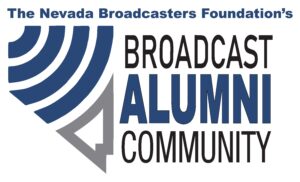
The minority tax certificate is back in the news with revised bills being introduced in both the House of Representatives and the Senate. We wrote about a version of this bill introduced in the last session of Congress here. The tax certificate offers perhaps the most meaningful route to increasing diversity in broadcast ownership. While the certificate was abolished by Congress over 25 years ago, these new bills signaling the potential for its revival merits another examination of what this policy did and why it was effective, and what is now being proposed.
The minority tax certificate was a program designed to provide broadcasters with an economic incentive to sell their stations to minority owners. Rather than directly subsidizing the potential owners, the certificate instead gave a tax break to sellers of broadcast stations that incentivized them to sell to a minority-owned business even if there were multiple bidders for their properties. If the seller sold its station to a minority-owned business, the seller could take the proceeds from the sale and roll those proceeds over into a new media property without recognizing the taxable gain from the sale. Unlike the typical like-kind exchange where the roll-over into a new property has to proceed within a few months of the sale, the tax certificate treated the sale as an involuntary sale (like the sale of a property because of a government’s exercise of eminent domain) under Section 1033 of the tax code, giving the seller several years to roll the proceeds over into a new purchase. At that point, the new property would have the same tax basis as the old – meaning that no gain would be recognized until the sale of the new property. In the closing decades of the last century, this policy spurred many sales to minority-controlled companies by broadcasters looking not to get out of the business, but instead looking to realign their holdings or to move up into larger markets. Several hundred radio and TV stations were purchased under this program in the last 20 years of the program’s existence. Why was this seemingly successful program abandoned?
The program always had some critics who objected to the constitutionality of race-based set-asides, or expressed fears of the “gaming” of the program by non-minority companies using minority “fronts” to exploit the tax benefits. But the straw that appeared to break the camel’s back was the proposed mid-1990s sale of a major cable company to a minority-controlled buyer, where taxes of hundreds of millions of dollars would have been deferred upon the sale. The prevalent attitude in Congress at the time seemed to be that companies that can make such a large acquisition were not the economically-disadvantaged companies that the program was meant to promote – and that the government would be giving up too much money by allowing the continued use of the certificate program.
Even though it was repealed, the idea of the tax certificate never went away – probably because it was likely the single most successful program that the FCC ever had at its disposal to promote meaningful diversity in the ownership of broadcast stations. Suggestions for the revival of the program have been floated almost ever since.
Introduced in recent weeks are revised proposals in Congress by Congressman G.K. Butterfield and Senator Gary Peters to revive the program. These new bills establish limits on the program to overcome some of the objections that existed to the program in the last century. To overcome some of the constitutional objections, the new bills apply to sales to companies controlled by “socially-disadvantaged individuals” – not just to businesses that are minority-owned. Socially disadvantaged individuals are defined as women and individuals “who ha[ve] been subjected to racial or ethnic prejudice or cultural bias because of the identity of the individual as a member of a group without regard to the individual qualities of the individual.” To overcome the concerns about this program being exploited by big businesses that don’t need government assistance, the program proposes to cap the size of the sale that could take advantage of the certificate – with that cap being no more than $50 million. The bill also requires that socially-disadvantaged individuals be involved in the management of the stations acquired, and that the properties be held for between two and three years to avoid the purchased stations quickly being turned over to non-qualifying businesses. A limit on the number of sales that one seller can receive is also proposed. These limitations and definitions would be further refined by an FCC proceeding to be completed within a year of the passage of the bills.
Also, investors in companies owned or controlled by socially disadvantaged individuals would qualify for a certificate. This could enhance the incentives for participation in the FCC’s incubator programs that were adopted in 2018 (see our articles here and here).
The House and Senate Bills are worded slightly differently and bear different names. The House Bill is called the Expanding Broadcast Ownership Opportunities Act of 2021, the Senate Bill the Broadcast Varied Ownership Incentives for Community Expanded Service Act (or the Broadcast VOICES Act). But the substantive provisions described above are contained in both. Each bill also proposes that the FCC track minority ownership and report on it to Congress on a regular basis.
There does not seem to be any significant opposition to this bill. Both minority organizations and the NAB have voiced their support. Where this bill will go in Congress remains to be seen, but there is a real push behind this bill by supporting organizations. Watch in coming months to see if these bills move forward to reinstate this valuable tool to increase broadcast ownership diversity.
Courtesy Broadcast Law Blog


